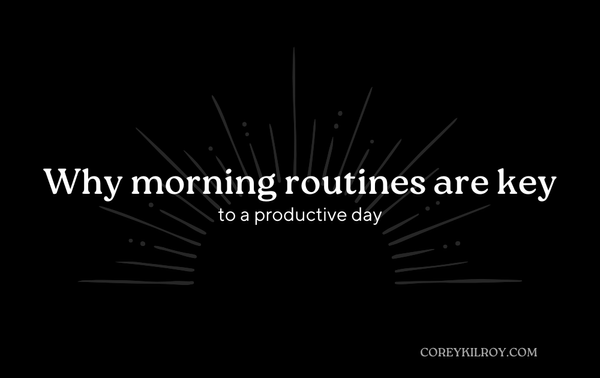The Importance of Speed Work in Running

Since starting my running journey, I’ve learned that, yes, the distance you run is an important factor, but endurance training involves so much more.
A training week of running typically involves,
- easy runs
- long runs, and
- running workouts (like track/speed workouts).
Easy runs are, well, easy Zone 2 runs that can be done at a conversational pace.
Long runs are, exactly that, dedicated days of running for longer distances. This trains our physical and mental stamina.
What is Speed Work in Running?
Although some runners use it to describe a run done at faster than an easy pace, speed work refers to a type of running workout in which you’re running for certain intervals near, at, or even faster than your VO2max pace.
Speed workouts are necessary to increase our overall anaerobic threshold, i.e. our running fitness and endurance.
These higher-intensity workouts allow us to run faster for longer.
This is a basic adaptation principle in exercise physiology and is just as important in running as it is in weight training:
More on the General Adaptation Syndrome (GAS) here.
Benefits of Speed Workouts
1. More Anaerobic Endurance
Definitions:
- Aerobic exercise involves continuous movement fueled by oxygen from the air you breathe.
- Anaerobic exercise involves short bursts of high-intensity movement fueled by energy stored in your muscles.
Many people commonly think that running is solely an aerobic activity. This is not true.
The first 30-40 seconds of any run or race is largely fueled by anaerobic energy.
At the start of exercise, there’s a 30-40-second delay before you can provide your muscles with enough oxygen to increase aerobic energy production (all aerobic energy is created within your muscles).
Until then, your anaerobic system fills the gap.
By doing speed work, you’ll lessen the fatigue associated with anaerobic energy production.
Matter of fact, a study put male and female runners through training to complete ten sessions of speed training over the course of six weeks.
By the end, their average 10K time improved by 3.2%! This equates to a 50-minute 10K runner bringing their time down to 48:25.
2. Improved Running Economy
Running economy measures how efficiently you use oxygen at a given running speed.
Take your current 5K pace as an example.
If you improve your running economy, you’ll require less oxygen to run at that pace.
With the spare oxygen, you can either fuel a faster pace or maintain your current pace for a longer race, say a 10K or half marathon.
High-intensity, speed workouts are key to improving the nervous system component of running economy, with some studies showing up to 6 percent improvement in as little as four to six weeks.
3. Run faster for longer
If you want to run faster, you have to practice running faster.
Duh…
Overall, speed workouts train you how to,
-Output more effort
-Maintain a higher cadence, and
-Mentally cope with some physical discomfort while running
Additionally, while you may not significantly increase your VO2max (genetics can play a role), you will see clear benefits from speed work.
Your body will become more efficient at recruiting your fast-twitch muscles and if you practice this skill once or twice per week, consistently, you not only become faster at running, but you’ll run faster with less effort.
Types of Running Speed Workouts - What’s the difference?
When it comes to running workouts, you may be familiar with tempo runs, interval training, strides and Fartklet runs.
Detailed essay on Fartlek runs here.
As you can see, a fartlek is a continuous run with varying speeds, while interval training sometimes allows you to take a brief rest.
Tempo runs involve a warm-up and cool-down with your threshold speed mixed in the middle.
Strides are shorter, faster bursts of accelerations (not quite a sprint) that train your body how to run fast without working too hard with recovery in between. These are typically done before or after a run.
Remember, the goal here is to increase anaerobic fitness levels - being able to run faster for longer.
Nonetheless, all three forms of running workouts may be utilized, one way or another, in a running program to work on endurance levels.
How can we get started with Speed Workouts?
Speed workouts are not as hard as you think.
Generally speaking, speed workouts should be only about 10-20% of your training – or roughly one workout per week.
You can also include small doses of speed in the form of strides throughout the rest of the week after a few easy runs.
If you’re completely new to running, then strides are a great place to start. Then once you get the hang of things, then you can start to introduce other speed workouts like the ones above.
A study published in the Journal of Strength and Conditioning Research confirmed that shorter speed intervals yield more benefits for long-distance runners than long speed intervals do.
Shorter speed intervals develop more running economy and have less risk of injury than longer intervals.
To start, aim for 1 minute to 3 minutes in length (or roughly 200m-600m), with a total of ten to fifteen minutes of hard running total depending on your ability.
Whenever you are doing speed workouts, build in time to recover before your next hard effort.
Personally, I like to incorporate a speed workout on Wednesday and long runs on Saturday or Sunday, with rest days and easy runs in between.
Example workouts:
Fartleks
You may have already tried Fartleks in your running before.
When running outside, try running faster paces between telephone poles, fire hydrants, trees, etc.
Saying, “I’m gonna run a fast pace until the next telephone pole, slow down between the next one, and repeat”, is exactly what a Fartlek is.
Here’s another example that’s more structured:
- 10 minutes of warm-up pace
- 1-3 minutes of race pace
- 1 minute of resting pace
- Repeat 4-8 times
- 10 minutes of cool-down pace
You can scale the race and resting pace variations depending on how much long-distance running you’re seeking to complete.
Cutdown Intervals
Intervals are a fun way of pushing yourself to run faster.
Try:
- 1-2 miles easy running
- 3 x 600m-400m-200m, with 1.5 min recovery after the 600m & 400m repeats and 3 min recovery between sets
- 1-2 miles easy running
Strides
Runners of all skill levels will benefit from Strides and you can do them at virtually any point in training.
You can aim to run all of these intervals at the same pace/effort, or run progressively faster as you go.
Try:
- 10-20 minute warm-up of easy running
- 10-12 x 1 min fast, 1 min easy
- 10-20 minute cool down of easy running
In the end…
When it comes to training, creating calculated stress on the body in order to cause physiological adaptations is very important.
Otherwise, very minimal progress will ever be made.
Adding speed workouts will ensure these adaptations are made.
Be well and Keep Pluggin.
-C.



